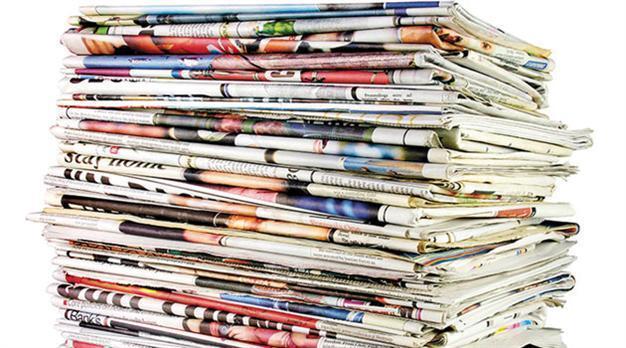PM Erdoğan’s jet
William ARMSTRONG - william.armstrong@hdn.com.tr
 As Turkish Prime Minister Recep Tayyip Erdoğan flies around on his apparently never-ending election campaign, the symbolism of “Erdoğan’s jet” and who he invites onboard is coming under increasing scrutiny. These days, only reporters from the most craven pro-government media outlets – the usual suspects of Sabah, Yeni Şafak, Star, Akşam, Türkiye, Yeni Akit – tend to be given the golden ticket to fly on Erdoğan’s private “ANA” jet; a place on board is almost used as a carrot to reward docile behaviour. As daily Hürriyet’s ombudsman Faruk Bildirici wrote in a piece last month, the reporters accepted onto the plane are guaranteed not to ask difficult questions, choosing to do little more substantial than perform as the AKP’s media arm, “as assistants to help Erdoğan comfortably transmit whatever message he wants to the public.”
As Turkish Prime Minister Recep Tayyip Erdoğan flies around on his apparently never-ending election campaign, the symbolism of “Erdoğan’s jet” and who he invites onboard is coming under increasing scrutiny. These days, only reporters from the most craven pro-government media outlets – the usual suspects of Sabah, Yeni Şafak, Star, Akşam, Türkiye, Yeni Akit – tend to be given the golden ticket to fly on Erdoğan’s private “ANA” jet; a place on board is almost used as a carrot to reward docile behaviour. As daily Hürriyet’s ombudsman Faruk Bildirici wrote in a piece last month, the reporters accepted onto the plane are guaranteed not to ask difficult questions, choosing to do little more substantial than perform as the AKP’s media arm, “as assistants to help Erdoğan comfortably transmit whatever message he wants to the public.”An increasingly narrow coterie of trusted media figures is being granted access to the prime minister. The effect isn’t only seen in who Erdoğan accepts onto his plane; it is also there in the TV stations and newspapers that he and other prominent government figures choose to grant interviews to, and in the hand-picking of interlocutors during these exchanges. Of course, democratic governments across the world have media groups to which they are closer and which, to some extent, they rely on; indeed, the opposition parties in Turkey also have their own “reliable” media camps. But there’s something blatantly unfair about the mutually supportive state-private network that is reinforcing the AKP government in power today. The cosiness of the prime minister and the media accepted onto his jet is just one of the most obvious examples of this favouritism.
Last week, the Nielsen Company’s AdEx advertising information report caused quite a stir in Turkey, revealing how advertising provided by state companies was weighted heavily in favour of government-friendly media groups. According to the report, of the 18 national newspapers examined, the three that received the most public advertising slots in the first six months of 2014 were the pro-government Sabah, Star and Milliyet dailies. The bottom five, meanwhile, were all broadly AKP sceptics, despite two of them – Posta and Zaman – having the highest circulation figures in the country. The two newspapers known as being close to the movement of ally-turned-bête noir Fethullah Gülen – Bugün and Zaman – received almost zero advertising from state institutions. Similarly, TV stations that are known to be closer to the government received far more advertising from public bodies in the first half of the year. Two pro-Gülen television channels – Samanyolu and Bugün TV – received no advertising revenue whatsoever from state companies. While much of the recent focus has been on public broadcaster TRT’s hugely imbalanced coverage in favour of Erdoğan ahead of next month’s presidential election, the way that state institutions are marching in lock-step with government-friendly private companies also has perilous consequences.
The issue of who gets to travel on the prime minister’s private jet is only one symptom of a Turkish media stuck in a broader partisan malaise. Indeed, while those who get invited onto the PM’s plane see their role as only being to transmit whatever the prime minister says, the myopic fixation on every word uttered by Erdoğan is unfortunately shared across pro- and anti-government outlets (as I have previously written). With important exceptions, all sides are sucked into an endless, meaningless argument about where they stand on whatever Erdoğan’s latest utterances and positions are – those positions are the fuel motoring 80 percent of Turkish media’s shallow news agenda. “Important Statements from the Prime Minister” stories are only becoming more common as power becomes more centralized around one man, and the situation isn’t likely to improve after Erdoğan is elected president next month.
















